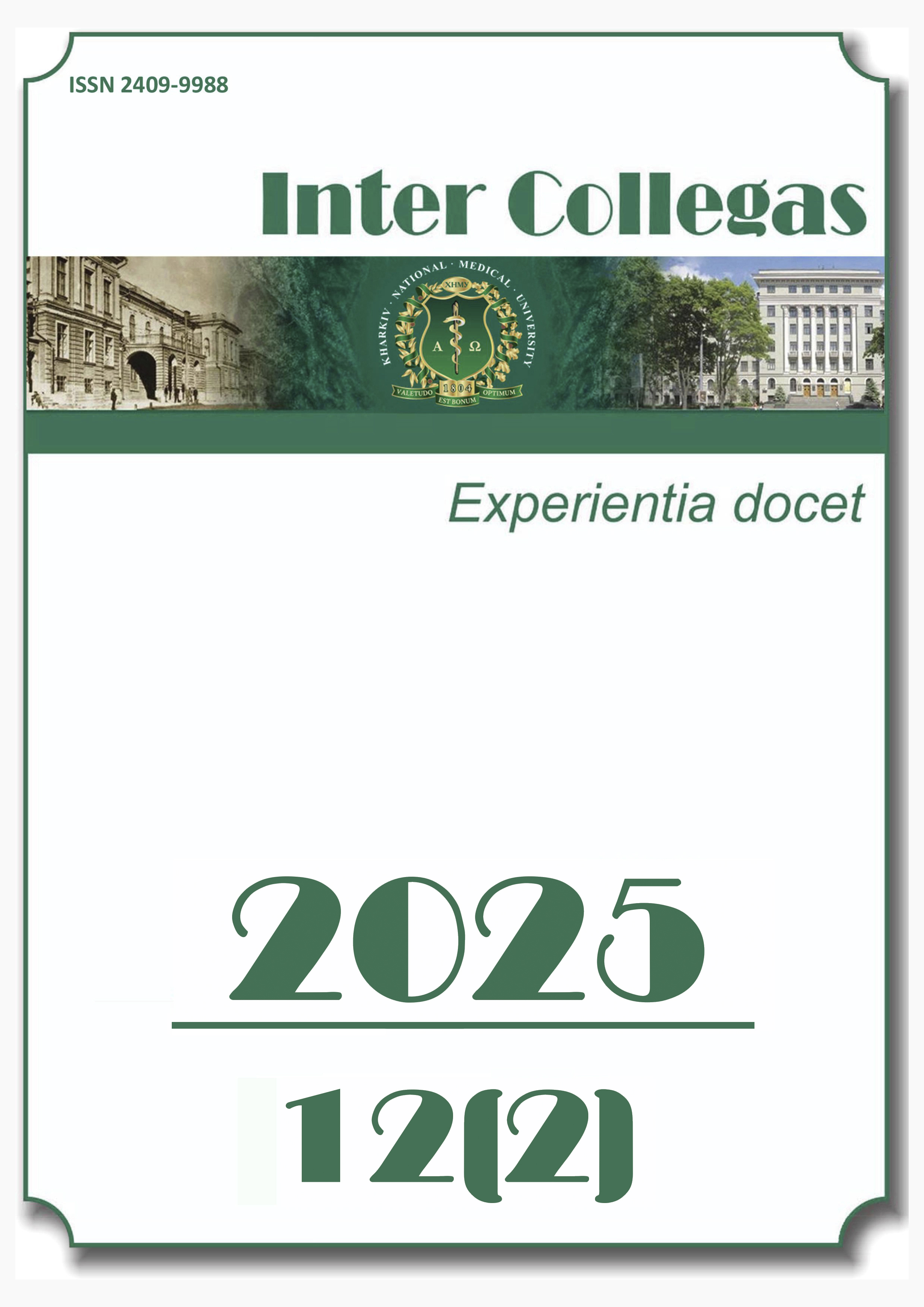Abstract
In press
Background. Stroke remains one of the leading causes of long-term disability worldwide, especially among older adults. Given the increasing incidence of CerebroVascular Accidents (CVAs) in the aging population, there is a growing need for comprehensive, individualized rehabilitation programs that address the specific physical, cognitive, and emotional needs of elderly patients.
Aim. To evaluate the effectiveness of therapeutic exercise as part of a multidisciplinary rehabilitation approach in elderly patients following an acute stroke.
Materials and Methods. The study included 21 patients aged 62 to 79 years who were undergoing rehabilitation following an acute CVAs in a district hospital setting. The rehabilitation process featured a seven-stage individualized program consisting of physical therapy, occupational therapy, speech and language therapy, cognitive training, and psychosocial support. The effectiveness of the interventions was evaluated using standardized scales: the Modified Rankin Scale, Barthel Index, Montreal Cognitive Assessment, Visual Analogue Scale, and Borg Rating of Perceived Exertion.
Results. 76% of the participants (n=16) showed significant improvement in their overall condition, including reduced neurological symptoms (aphasia, hemiplegia), enhanced motor skills, better balance, improved emotional well-being, and increased independence in daily activities. The remaining 24% of patients (n=5) also demonstrated positive changes but required additional rehabilitation cycles due to limited recovery potential and complex comorbidities.
Conclusions. Individualized therapeutic exercises, integrated within a multidisciplinary rehabilitation framework, are effective in improving the physical and cognitive outcomes of elderly patients after stroke. Early initiation of rehabilitation, combined with continuous assessment and support from a multidisciplinary team, enhances functional recovery and improves the overall quality of life in this vulnerable population.
Keywords: elderly patients, functional recovery, cerebrovascular accident.
References
Johnson W, Onuma O, Owolabi M, Sachdev S. Stroke: a global response is needed. Bull World Health Organ. 2016;94(9):634-634A. DOI: 10.2471/BLT.16.181636. PMID: 27708464.
Langhorne P, Bernhardt J, Kwakkel, G. Stroke rehabilitation. Lancet. 2011;377(9778):1693-702. DOI: 10.1016/S0140-6736(11)60325-5. PMID: 21571152.
Vluggen TPMM, van Haastregt JCM, Tan FE, Verbunt JA, van Heugten CM, Schols JMGA. Effectiveness of an integrated multidisciplinary geriatric rehabilitation programme for older persons with stroke: a multicentre randomised controlled trial. BMC Geriatr. 2021;21(1):134. DOI: 10.1186/s12877-021-02082-4. PMID: 33622269.
Luo Y, Hao J, Zhu L, Huang Y, Liu Z, Chen Y, et al. Effects of multicomponent exercise nursing intervention in elderly stroke patients with frailty: a randomized controlled trial. Front Med (Lausanne). 2024;11:1450494. DOI: 10.3389/fmed.2024.1450494. PMID: 39416863.
Saraiva J, Rosa G, Fernandes S, Fernandes JB. Current trends in balance rehabilitation of stroke survivors: A scoping review of experimental studies. Int J Environ Res Public Health. 2023;20(19):6829. DOI: 10.3390/ijerph20196829. PMID: 37835099.
Li X, He Y, Wang D, Rezaei MJ. Stroke rehabilitation: from diagnosis to therapy. Front Neurol. 2024;15:1402729. DOI: 10.3389/fneur.2024.1402729. PMID: 39193145.
Guidelines for Adult Stroke Rehabilitation and Recovery: A Guideline for Healthcare Professionals From the American Heart Association/American Stroke Association. Stroke Rehab Guideline Writing Committee. Stroke. 2016;47(6):e98-169. DOI: 10.1161/STR.0000000000000098. PMID: 27025897.
Motor rehabilitation after stroke: European Stroke Organisation (ESO) consensus-based definition and guiding framework. Kwakkel G, Stinear C, Essers B, Munoz‑Novoa M, Branscheidt M, Cabanas‑Valdés R, et al. Eur Stroke J. 2023;8(4):880‑94. DOI: 10.1177/23969873231191304. PMID: 37548025.
Rehabilitation in health systems: guide for action. World Health Organization. Geneva: WHO; 2019. 72 p. Available at: https://www.who.int/publications/i/item/9789241515986
French B, Thomas LH, Leathley MJ, Sutton CJ, McAdam J, Forster A, et al. Repetitive task training for improving functional ability after stroke. Cochrane Database Syst Rev. 2007;(4):CD006073. DOI: 10.1002/14651858.CD006073. PMID:17943883.
Chen JW, Guan Y, Zheng YL, Zhu K. Research trends and frontiers in exercise for movement disorders: A bibliometric analysis of global research from 2010 to 2021. Front Aging Neurosci. 2022;14:977100. DOI: 10.3389/fnagi.2022.977100. PMID: 36158546.
Koyuncu E, Сam P, Altınok N, Сallı DE, Duman TY, Ozgirgin N. Speech and language therapy for aphasia following subacute stroke. Neural Regen Res. 2016;11(10):1591-4. DOI: 10.4103/1673-5374.193237. PMID: 27904489.
Brady MC, Kelly H, Godwin J, Enderby P, Campbell P. Speech and language therapy for aphasia following stroke. Cochrane Database Syst Rev. 2016;2016(6):CD000425. DOI: 10.1002/14651858.CD000425. PMID: 27245310.
Brady MC, Mills C, Prag Ora H, Novaes N, Becker F, Constantinidou F, et al. Complex speech-language therapy interventions for stroke-related aphasia: The RELEASE study incorporating a systematic review and individual participant data network meta-analysis. Eur Stroke J. 2025:23969873241311025. DOI: 10.1177/23969873241311025. PMID: 40401776.
Landi F, Cesari M, Onder G, Tafani A, Zamboni V, Cocchi A. Effects of an occupational therapy program on functional outcomes in older stroke patients. Gerontology. 2006;52(2):85-91. DOI: 10.1159/000090953. PMID: 16508315
Garcia-Perez P, Rodriguez-Martinez MC, Gallardo-Tur A, Blanco-Reina E, de la Cruz-Cosme C, Lara JP. Early Occupational Therapy Intervention post-stroke (EOTIPS): A randomized controlled trial. PLoS One. 2024;19(8):e0308800. DOI: 10.1371/journal.pone.0308800. PMID: 39159190.
Pollock A, Baer G, Campbell P, Choo PL, Forster A, Morris J, et al. Physical rehabilitation approaches for the recovery of function and mobility following stroke. Cochrane Database Syst Rev. 2014;2014(4):CD001920. DOI: 10.1002/14651858.CD001920. PMID: 24756870.
Winstein CJ, Stein J, Arena R, Bates B, Cherney LR, Cramer SC, et al. Guidelines for adult stroke rehabilitation and recovery: A guideline for healthcare professionals from the American Heart Association/American Stroke Association. Stroke. 2016;47(6):e98-e169. DOI: 10.1161/STR.0000000000000098. PMID: 27145936.
Tyson SF, Burton L, McGovern A. Multi-disciplinary team meetings in stroke rehabilitation: an observation study and conceptual framework. Clin Rehabil. 2014;28(12):1237-47. DOI: 10.1177/0269215514535942. PMID: 25389172.
Wen X, Li Y, Zhang Q, Yao Z, Gao X, Sun Z, et al. Enhancing long-term adherence in elderly stroke rehabilitation through a digital health approach based on multimodal feedback and personalized intervention. Sci Rep. 2025;15(1):14190. DOI: 10.1038/s41598-025-95726-z. PMID: 40268986.
Malik AN, Tariq H, Afridi A, Rathore FA. Technological advancements in stroke rehabilitation. J Pak Med Assoc. 2022;72(8):1672-74. DOI: 10.47391/JPMA.22-90. PMID: 36280946.
Gittler M, Davis AM. Guidelines for adult stroke rehabilitation and recovery. JAMA. 2018;319(8):820-1. DOI: 10.1001/jama.2017.22036. PMID: 29486016.
Saunders DH, Sanderson M, Hayes S, Johnson L, Kramer S, Carter DD, et al. Physical fitness training for stroke patients. Cochrane Database Syst Rev. 2020;3(3):CD003316. DOI: 10.1002/14651858.CD003316. PMID: 32196635.

This work is licensed under a Creative Commons Attribution-NonCommercial-ShareAlike 4.0 International License.


